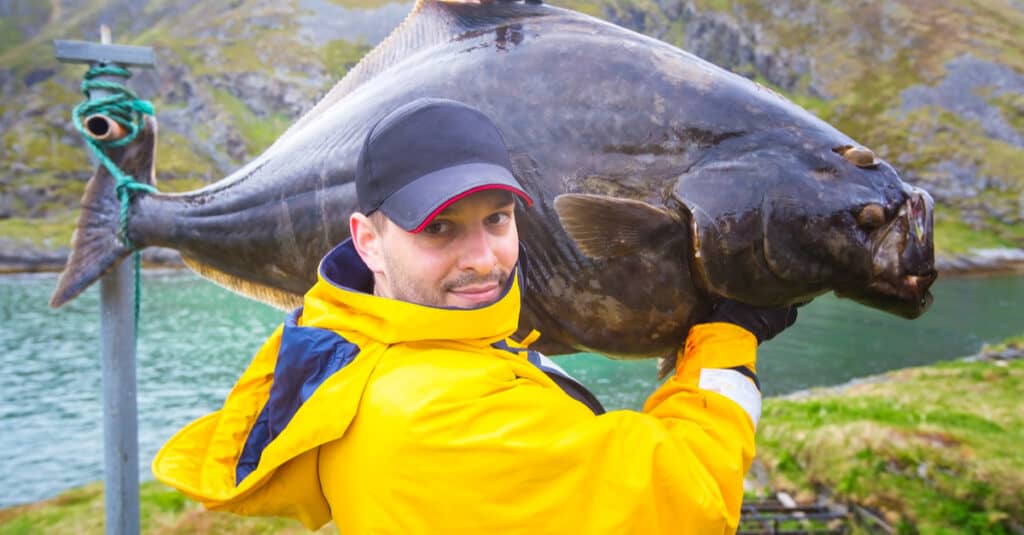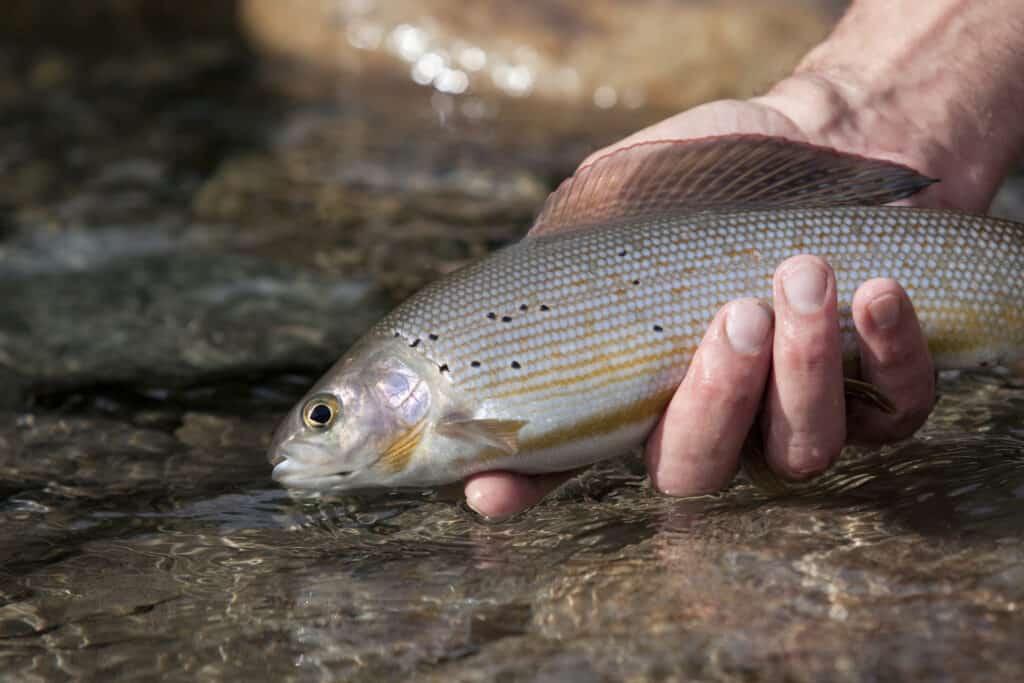When you go to Alaska this summer, trout are only one of the species you should target. There are all sorts of other freshwater and saltwater species that can be a lot of fun to hunt.
What are the best fish to catch in Alaska this summer? Read on to find out!
1. Sockeye Salmon

Sockeye salmon are sometimes called reds.
©Vasik Olga/Shutterstock.com
Target one of the smaller species of Pacific salmon, the sockeye salmon. Sockeye salmon usually max out at 30 inches and weigh between 5-15 pounds. Their bodies sport lovely metallic colors on top, white undersides, and silvery flanks. The metallic colors have earned them the nickname “blueback salmon.” Other nicknames include red salmon, kokanee salmon, and sockeye.
Where to Fish
Sockeye salmon are native to North America’s west coast. They spend the majority of their lives in saltwater environments. However, starting in July, they begin to move inland to spawn. They’re among the best fish to catch in Alaska this summer because there are so many of them. They prefer water temperatures that are below 60 degrees Fahrenheit. However, they can be found in waters as warm as 70 degrees Fahrenheit.
Best Techniques
The best lures for sockeye salmon include sand shrimp, salmon roe, and a variety of active lures. Winged bobbers, spinners, and spoon lures are among the best active lures. You could also try wrapping a kwikfish with live bait.
Are They Good Eating?
Sockeyes taste identical to other salmon species in Alaska. The meat is rich, full of flavor, and has a dark color. The darker colors have to do with their diet. Sockeyes eat a lot of shrimp, plankton, and crustaceans, all of which help them taste better for you.
2. Halibut

Halibut spend most of their time on the sea floor.
©Alexey Savchuk/Shutterstock.com
Catch an exciting fish that’s known for swimming sideways, the halibut. Halibut spend most of their lives on the sea floor, foraging for food. They have white undersides, various dark colors on their sides, and a flat oval shape. Often referred to as flatfish, Pacific halibut can weigh as much as 30 pounds.
Where to Fish
You can find a lot of halibut swimming along the continental shelf. The continental shelf is the area of water you’ll encounter before reaching the deep sea. Halibut like eating cod, herring, smelt, pollock, and sand lance. They also eat crustaceans like crabs, clams, and the occasional octopus.
Best Techniques
Knowing what halibut prefer to eat gives you an advantage when choosing baits. Choose irresistible baits such as squid, herring, and octopus. If you’re not catching enough fish, try using larger hook sizes and larger baits. To make a halibut magnet, put an entire salmon head on the end of a large hook.
Are They Good Eating?
Halibut are among the best-tasting fish you can target. They have a mild, delicate flavor that’s a lot like a clam. They don’t taste fishy, just delicious. Halibut might even be the best-tasting fish you’ve ever had; they’re that good.
3. Northern Pike

Northern pikes eat crappie, bluegill, and minnows.
©bekirevren/Shutterstock.com
When you’re looking for the best fish to catch in Alaska this summer, Northern pikes are an obvious choice. These fish have long bodies with olive green colors. Their bellies are usually white or light yellow. You’ll notice a few dark spots on the fins; sometimes, they have gentle vertical bars too. Their snout is like a muskie’s, long and flat. The dorsal fins are right by the tail.
Where to Fish
Northern pikes prefer shallow waters and lead a piscivorous lifestyle. It’s these low-flow areas where they can target their prey. As predatory fish, pikes eat a diet consisting of crappie, bluegill, minnows, small walleye, and the occasional small bass. They usually don’t enter brackish areas, and they spend their lives in freshwater ecosystems.
Best Techniques
Use spoons, inline spinners, and plastic swim baits to catch pike. For spoons, you’ll want a wide variety. For soft swim baits, try customizing them for each location. Finally, you’ll find that a fast action rod will make it easier for you to control the pike after placing your spoon. A medium/fast action rod also works well for walleye fishing.
Are They Good Eating?
You’ll get to enjoy white meat and mild flavor when eating pike. It’s a tasty fish that works in a lot of recipes. The meat is also healthy since it contains protein and vitamin D.
4. Arctic Grayling

Arctic graylings can be found swimming along the Alaska Highway.
©iStock.com/Alaska_icons
Considered one of the loveliest freshwater fishes, Arctic grayling color depends on where you find them. They belong to the char family, and in Alaska, you’ll mainly find dark colors like blue and black. These fish also have gold borders on their bellies and sides. Their pelvic fins sport vibrant pink, red, or orange colors. Sometimes the sides of their head and body will also have black freckles. Adults usually don’t grow longer than a foot and tend to weigh under 5 pounds.
Where to Fish
You’ll find Arctic graylings in freshwater environments throughout Alaska; they like cold clear waters. You’ll be amazed at how many fish you find when fishing along the Alaska Highway. The Chena River, Salcha River, and Birch Lake are great fishing spots.
Best Techniques
How do you catch Arctic graylings? They don’t put up as much of a fight as other fish like rainbow trout. But they’re still going to make you work for them. Don’t be surprised if the grayling leaps around once hooked, trying to shake free of the hook. Try using a light-action spinning rod and a monofilament line. These fish have soft mouths, and mono lines mean fewer pulled hooks.
Are They Good Eating?
There’s a long-standing debate that graylings may be the best-tasting freshwater fish in Alaska. You’ll have to catch one to find out for yourself. Try cooking one over an open fire after a rewarding day of fishing.
The photo featured at the top of this post is © JCA Images/Shutterstock.com
Thank you for reading! Have some feedback for us? Contact the AZ Animals editorial team.






